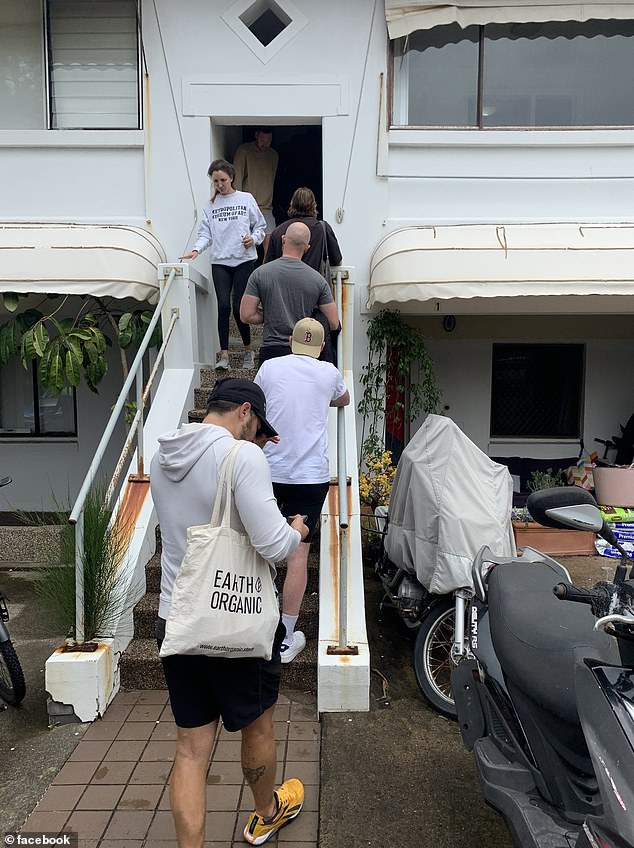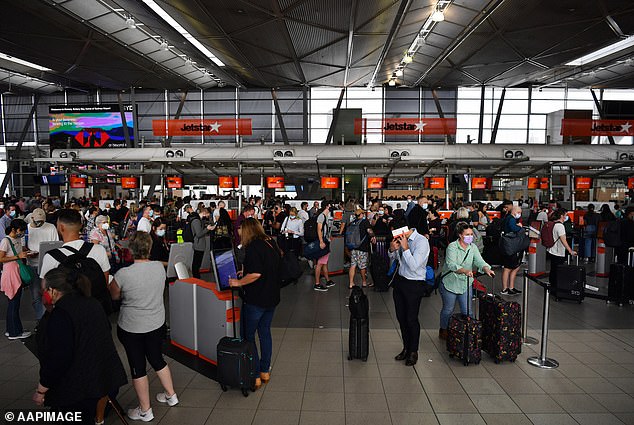American exposes the four huge problems with the housing market in Australia: ‘It looks like paradise, but there’s a dark side’
A popular YouTube documentary channel has revealed why Australia’s housing market is spiraling out of control and offers solutions to fix it.
In a video shared last month ‘Why It’s Impossible to Live in Australia‘ American YouTuber team 2 and 20 investigated the leading causes of the country’s affordable housing crisis.
Immigration, red tape, tax breaks and declining investment were among the many reasons attributed to the skyrocketing prices.
“The country looks like paradise, but if you want to live here, it’s easier said than done. This is the dark side of Australia,” the video’s voiceover said.
‘Australia has the 13th largest economy in the world, beautiful beaches, access to world-class education, universal health care and much more.
‘At the same time, house prices and rents in Australia have reached record highs, making Australia one of the least affordable places in the world.’
House prices exceed income
“To buy the average house in Melbourne, a family needs to earn at least $170,000 a year. In Sydney, that number rises to $260,000 a year,” the video reads.
“It’s becoming clear that owning a home is well out of reach for most Australians,” says the video Why Living In Australia Is Impossible
Teams 2 and 20 compared this to the median household income in both cities, which was $100,000.
“It is clear that for most Australians, owning a home is unaffordable,” the video reads.
‘Some might argue that this is just a Sydney or Melbourne issue, but that’s simply not the case.
‘Since 2020, house prices in Brisbane, Adelaide and Perth have risen by more than 50 percent, while wages have increased by just 12 percent.
‘For many Australians, especially young Australians, it is becoming increasingly difficult to buy their own home.’
To illustrate the ‘madness’ of the Australian housing market, they used the example of a house in Sydney that sold for $3.5 million without a toilet, kitchen and electricity.
Immigration
The video states: “The first culprit that many point to is immigration.”
‘From 2022 to 2023, Australia welcomed almost 740,000 people, more immigrants than in any year in modern Australian history, and 200,000 more than before Covid.
‘The impact of this huge increase in immigration is simple: more demand for the same housing supply leads to higher prices.’
The team found that the majority of immigrants to Australia are temporary visa holders and 70 percent of them are renters.
‘The impact is greatest in suburbs where many migrants live.
‘For example, in south-east Melbourne or south-west Sydney, rents have increased by 18 percent in the past year.’
Teams 2 and 20 showed how immigration affects house prices.
“The argument that immigrants make the largest contribution to house price increases is rather weak,” the researchers said.
The video argues that while immigration continues to increase with population size, the number of new homes built has decreased.
‘In 2023, 170,000 homes were completed, the lowest number in ten years.’

“There is hardly any country on earth that has such a favorable tax regime for real estate investors,” said team 2 and 20.
Tax benefits
Team 2 and 20 believe that negative gearing has a negative impact on the Australian housing market.
The video discusses the introduction of negative gearing in the 1930s and how the government attempted to change the rules in the 1980s by imposing restrictions on the deductions that could be claimed.
“But this led to a significant backlash and the negative gearing was reverted to its original form,” the documentary team said.
‘There is hardly any country in the world that has such a favorable tax regime for real estate investors.
“The argument against it is that it provides material benefits to landowners and older Australians, and frankly that argument is entirely valid.”
Declining productivity and investments
The video argues that this is another factor contributing to the housing crisis.
Teams 2 and 20 argued that no one bothers to invest in anything else because Australia has made it so good to invest in non-productive assets, including real estate.
“Productivity growth in Australia has slowed in recent decades,” they said.
‘The average annual growth in labor productivity was only 1.1 percent between 2010 and 2020, significantly lower than in previous decades.’

The 2 and 20 team stated that the majority of immigrants to Australia are temporary visa holders, and 70 percent of them are renters
The 2 and 20 team revealed that Australia spent just 1.7 percent of GDP on research and development in 2022, compared to other major countries.
They described this as ‘horrible’.
‘As a result, nominal GDP per capita and real GDP per capita have not increased over the past decade.’
They said that even when comparing corporate and income tax rates, it is clear that Australia considers land ownership to be the most important investment activity.
The solutions
The video ended by proposing solutions to Australia’s housing crisis.
- Income tax cut for hardworking Australians
- Abolish negative gearing
- Lower incentives for capital gains
- Remove bureaucracy to stimulate housing construction
- Highly educated Australians who can keep politicians honest
